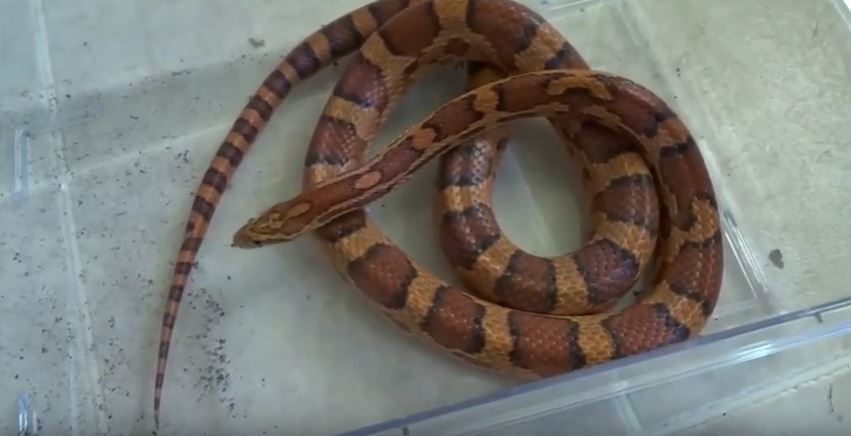The Corn Snake: appearance, biology, life cycle, habitat, diet, behavior

Appearance: The corn snake is slender and it is brownish, yellow and orange with large black edged red blotches down the middle of its back. On its belly, there are alternating rows of white and black marks and it resembles the checkerboard snakes. The specific appearance will depend on the age of the snake and the region of a country in which it is located. The younger ones do not have the bright coloration that is common in the adults.
Behavior: Corn snakes are normally active in the daytime, and they can climb trees and enter into abandoned buildings where they can search for their prey. But at the same time, they can be secretive and can spend their time underground where they can prowl in rodent burrows. They can hide under loose bark or beneath debris, rocks or logs.
Habitat: Corn snakes can be found in abandoned buildings, woodlots, barns, meadowlands, rocky hillsides and wooded groves.
Diet: The corn snake does not feed every day. The young ones eat tree frogs and lizards and larger adults may eat bats, birds, rats and mice. They are classified as constrictors. The corn snake bites the prey so that it can get a firm grip on it and it will then wrap one or more coils of its body around the victim. The snake will squeeze tightly and suffocate its prey. It will then swallow the food whole and the head will be the first part to be swallowed. Sometimes they can swallow their prey alive.
Reproduction: The male and female corn snake will mate many times in the breeding season. A female will continue to eat too much so that it may build up its fat stores. After the breeding season, the female will be pregnant with the eggs and it will stop to eat and shed for some time. She can lay around 10 to 30 eggs.
Life cycle: The pet corn snakes in captivity can live up to 18 years, and there are some records that these snakes can reach up to 22 years old.
Go back to the How to Get Rid of Snakes page or email us if you have any other questions about The Corn Snake: appearance, biology, life cycle, habitat, diet, behavior
About Us
We are the Pest Education Network, a non-profit organization that focuses on wildlife and pest removal education. Our approach utilizes Integrated Pest Management, a strategy advocating prevention and humane methods.


